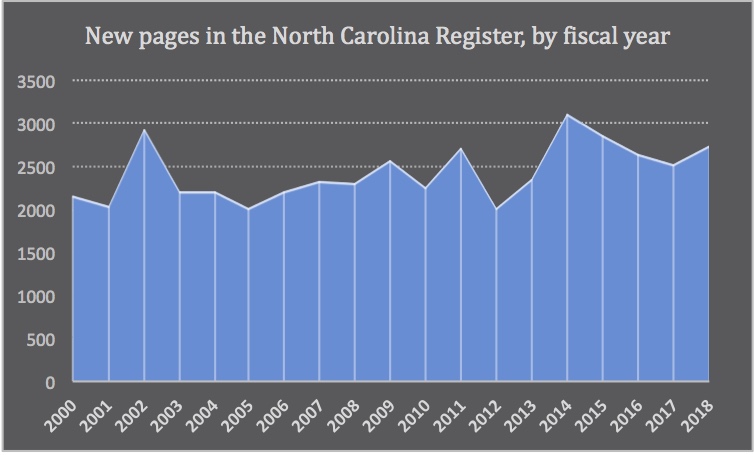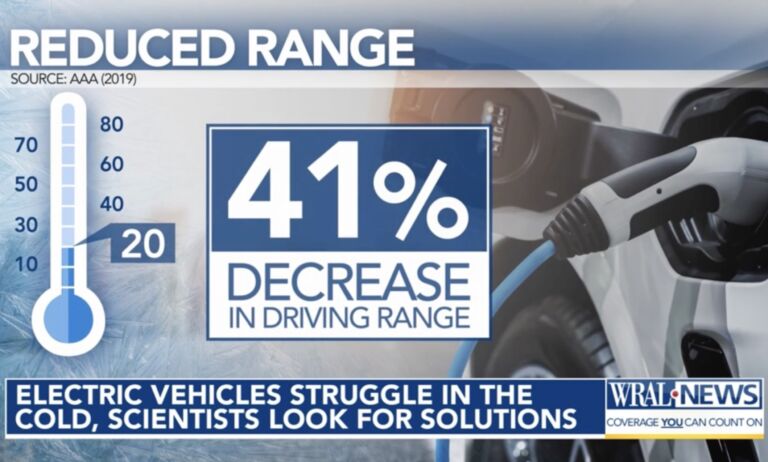A new look at rule-making activity in North Carolina shows that regulation, as the old beach tee puts it, keeps on truckin’.
In past years, the John Locke Foundation published a biannual policy guide “Agenda” booklet (the forerunner of our Policy Guide), which, of course, included a discussion of regulatory policy. Our Agenda illustrations included a graph of pages in the North Carolina Register with this explanation:
How many new pages are added to the North Carolina Register each year offers a quick snapshot of the state’s regulatory activity. Published twice a month, the North Carolina Register gives information on agency rule-making, executive orders, proposed administrative rules, contested case decisions, notices of public hearings, and other notices required by or affecting Chapter 150B of the General Statutes.
With the last issue of the Register for Fiscal Year 2018 just published, I thought it would be worth updating the chart. Here it is:
Trend in State Regulatory Activity, 2000–2018

As you can see, the chart is boring. It’s a solid wall of regulatory sameness, give or take a few minor hiccups. There seems to be a slight drift toward more regulatory activity, even with the Republicans’ annual regulatory reform agenda since 2011.
It would be nice to see that drift going the other way, but then again, it isn’t unexpected. That’s why the General Assembly’s dedication to regulatory reform, which began under Republican majorities, is so vital. It’s also why policymakers need to stay the course for more red tape reduction efforts.
Ongoing rule-making especially underscores the wisdom in a significant reform passed in 2013, sunset provisions with periodic review:
State regulations have been estimated to cost the private sector in North Carolina up to $25.5 billion in a single year. Such a tremendous toll on private enterprise, especially in terms of deadweight loss, is why it is vital to ensure that state regulations are (1) carefully made, and also (2) periodically checked to see if they’re working, still needed, outdated, or more trouble than they’re worth.
That’s what sunset provisions with periodic review of state rules is designed to do. Rules either sunset (get repealed) or are reviewed every 10 years.
So far under that reform, about one out of every eight rules under review have been repealed. That’s good. The interesting thing about that is, it could be doing even more:
Right now, however, the process includes an allowance for regulations that agencies found necessary and that don’t attract public comment. That category encapsulates well over half of state regulations. It lets them continue on without review, which means that even as the reform is doing well — one out of every eight rules is a big deal — it’s not doing as much good as it can.
It’s a simple fix, and one endorsed by the chairman of the Rules Review Commission. Get rid of that provision so that all rules either sunset or get reviewed every 10 years. The House and Senate seem to agree, as both chambers passed versions of that same reform in 2017. It remains to be done in 2018.
That simple fix was included in Senate Bill 735. Unfortunately, the bill will not pass before the adjournment of the 2018 legislative session. Lawmakers will have to wait until next year to make these important changes to the rules review process.


